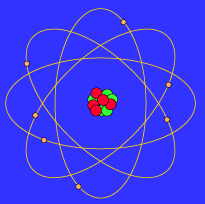Combustion of Fuels
The combustion or the burning of fuels, is perhaps the most common and obvious example of oxidation and reduction. Combustion is also that process which converts the potential energy of fuels into kinetic energy (heat and light). Most fuels (gasoline, diesel oil, propane, etc.) are compounds comprised primarily of carbon and hydrogen. These hydrocarbons represent an excellent source of potential energy which is released as heat during the combustion process. A common example is the oxidation of propane, the fuel used for gas ranges:
C3H8 + 5 O2 -----> 3 H2O + CO2 + Heat
As propane burns in air, its carbon atoms are oxidized when they combine with oxygen to form carbon dioxide. In turn, molecular oxygen is reduced by the hydrogen atoms, forming water. The heat produced can be used directly such as in the cooking of foods or to cause the expansion of the gaseous products produced to perform mechanical work such as in an internal combustion or steam engine.
Many other substances besides hydrocarbons can be used as fuels. For example, the alcohols, such as methanol (CH3OH) and ethanol (CH3CH2OH) are often used in racing cars. Ethanol mixed with gasoline, called gasohol , is currently being explored as a substitute for gasoline. Among the simplest fuels is molecular hydrogen (H2) which readily reacts with oxygen forming water as shown:
2 H2 + O2 ------> 2 H2O + Energy
The simplicity and "nonpolluting" aspect of this oxidation-reduction reaction, the amount of energy produced, and the relative abundance of both hydrogen and oxygen in our environment, makes hydrogen a very attractive alternative fuel source. Research efforts are currently focused on further developing the technology to broaden its use as a source of energy.
Subscribe to:
Post Comments (Atom)



No comments:
Post a Comment